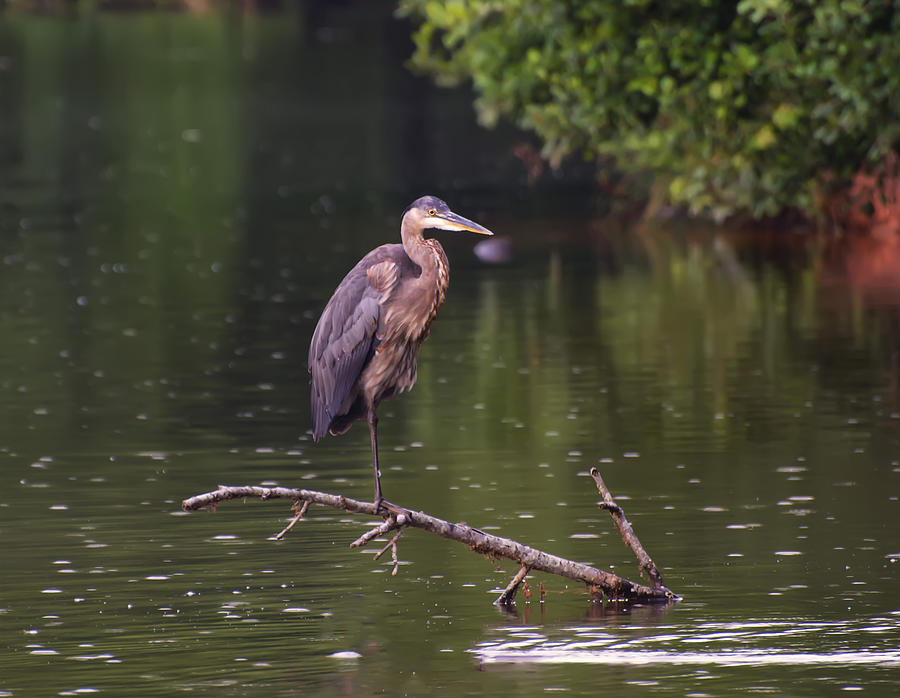
Great Blue Heron Fishing

by Flees Photos
Title
Great Blue Heron Fishing
Artist
Flees Photos
Medium
Photograph - Photograph
Description
a Great Blue Heron fishing on a North Carolina lake.
The Great Blue Heron (Ardea herodias) is one of the most majestic and recognizable wading birds in North America. Known for its tall stature and striking appearance, the Great Blue Heron is a fascinating bird with unique behaviors and adaptations. Here are some interesting facts about the Great Blue Heron:
Appearance: The Great Blue Heron is a large bird with a height of around 3 to 4.5 feet (0.9 to 1.4 meters). It has a long, sinuous neck, a dagger-like bill, and long legs. The plumage is predominantly bluish-gray, with a white face, black stripe above the eye, and a black plume extending down its neck during the breeding season.
Range: Great Blue Herons are found throughout North America, from Canada and Alaska to parts of Mexico and Central America. They inhabit a wide range of wetland habitats, including freshwater and saltwater marshes, swamps, lakes, rivers, and coastal estuaries.
Diet: Great Blue Herons are opportunistic predators with a varied diet. They primarily feed on fish, but they also eat amphibians, reptiles, insects, small mammals, and occasionally birds. They use their sharp bill to catch their prey, often striking quickly and with great precision.
Nesting colonies: During the breeding season, Great Blue Herons often nest in colonies with other herons and wading birds. They build large nests made of sticks and other plant material in trees near water. The nests can be several feet in diameter and may be used for multiple years.
Courtship displays: Great Blue Herons engage in elaborate courtship displays during the breeding season. These displays involve aerial acrobatics, stretching of the neck, and calling to attract a mate.
Unique hunting strategy: Great Blue Herons are patient hunters and often stand still or move slowly in shallow water, waiting for fish to swim within striking distance. They are known for their distinctive "S-curve" neck position when stalking prey.
Longevity: In the wild, Great Blue Herons can live for more than 15 years, depending on factors such as predation, food availability, and environmental conditions.
Flight: Despite their large size, Great Blue Herons are skilled fliers. They have slow, steady wingbeats and can soar gracefully on thermals during migration.
Vocalizations: Great Blue Herons are generally quiet birds, but they make a deep, harsh "kraak" or "fraunk" sound during interactions or when disturbed.
Conservation status: The Great Blue Heron is considered a species of least concern in terms of conservation status. Its populations are generally stable, but like many wetland-dependent species, it benefits from habitat conservation efforts and protection of nesting sites.
The Great Blue Heron's impressive size, graceful movements, and presence in a wide range of wetland habitats make it a beloved and iconic bird among birdwatchers and nature enthusiasts across North America.
This image is © Chris Flees all rights reserved
Uploaded
May 27th, 2014
Statistics
Viewed 3,195 Times - Last Visitor from New York, NY on 04/24/2024 at 5:37 AM
Embed
Share
Sales Sheet








































